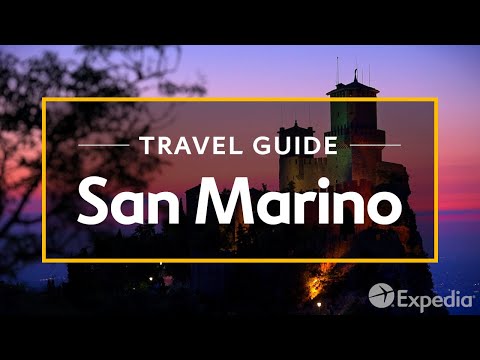
Nestled amidst the rolling hills of Italy’s Emilia-Romagna region, San Marino is not just one of the world’s smallest countries, but also one of its oldest republics. This microstate, perched atop Mount Titano, offers visitors panoramic views, medieval architecture, and a fascinating history that dates back to A.D. 301. If you’re planning a trip to this unique enclave through Expedia or any other travel service, here is your ultimate guide to enjoying what this remarkable country has to offer.
### Getting There and Around
San Marino is landlocked within Italy, about 20 kilometers from the Adriatic coast at Rimini. Despite its size, it does not have its own airport; the nearest major airport is Federico Fellini International Airport in Rimini. From there, visitors can take a bus or rent a car to reach San Marino in about 45 minutes.
Within the country itself, transportation options include buses and cable cars which provide a scenic route up and down Mount Titano. The historic centers are well-suited for walking, with most attractions within easy distance of each other.
### Attractions
#### Guaita Tower
One of three towers on Mount Titano’s peaks depicted on San Marino’s national flag, Guaita is the oldest and arguably the most iconic. Originally constructed in the 11th century as a prison, it now serves as a museum that offers breathtaking views over San Marino and beyond into Italy.
#### Palazzo Pubblico
The Palazzo Pubblico is San Marino’s town hall and the official Government Building situated in Liberty Square (Piazza della Libertà). An example of neo-Gothic architecture with hints of Tuscan style influences reflects through its crenelated turrets and frescoed interiors. Visitors can witness the changing of the guard ceremony here during summer months.
#### Basilica di San Marino
Dedicated to Saint Marinus himself – craftsman turned founder saint – this neoclassical church houses relics significant to both religious devotees and history buffs alike. Its grandiose structure stands out in the skyline making it an essential spot on every itinerary.
### Museums
San Marino offers several museums that cater to diverse interests:
– **State Museum** (Museo di Stato): Hosts archaeological finds from Neolithic times up through Renaissance paintings.
– **Museum of Curiosities**: This quirky museum showcases an array of unusual objects from around the world.
– **Torture Museum**: For those with a darker curiosity about historical judicial practices.
### Shopping
San Marino is known for its vibrant shopping scene which includes everything from high-end fashion brands to local handicrafts like ceramics and stamps – a collector’s delight given that San Marino releases its own postage stamps often sought after by philatelists.
### Dining
Italian cuisine dominates but with a local twist; dishes feature fresh ingredients grown in the region. Be sure to try their traditional cake known as “Torta Tre Monti,” inspired by Mount Titano itself.
### Accommodation
From luxury hotels offering spectacular views across the countryside to cozy B&Bs nestled in historical buildings within old town walls – there’s something for every taste and budget.
### When To Visit
The best time for your visit would generally be spring (April-May) or fall (September-October). The weather during these months is temperate making it perfect for exploring outdoor attractions comfortably without crowds typical for summer holidays.
### Tips Before You Go
– Remember that while Euro is used here; banking facilities are limited so carry cash.
– Check local events during your visit as national festivals could offer unique cultural insights or might crowd your stay.
Exploring this mountaintop microstate offers more than just stunning views: it’s stepping back into centuries-old history while enjoying modern amenities designed for discerning travelers. Whether planning an extended stay or just passing through Italy, adding San Marino via Expedia provides an enriching detour into one of Europe’s lesser-known gems—small perhaps in size but immensely rich in heritage.
